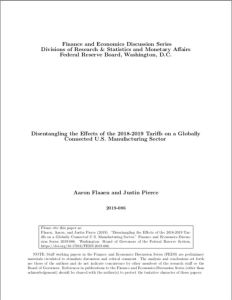
Report
Disentangling the Effects of the 2018-2019 Tariffs on a Globally Connected U.S. Manufacturing Sector
Federal Reserve Board,
2019
Recommendation
The tariff feud between the United States and China provides a unique window through which scholars can assess the wider effects of trade levies in economies interlinked through global supply chains. In their erudite study for executives and analysts, economists Aaron Flaaen and Justin Pierce find that US tariffs have so far failed to protect domestic industries, as input costs have risen and China’s retaliatory efforts have counteracted any hoped-for benefits.
Summary
About the Authors
Aaron Flaaen and Justin Pierce are economists at the Federal Reserve Board.
Learners who read this summary also read
Book
















Comment on this summary